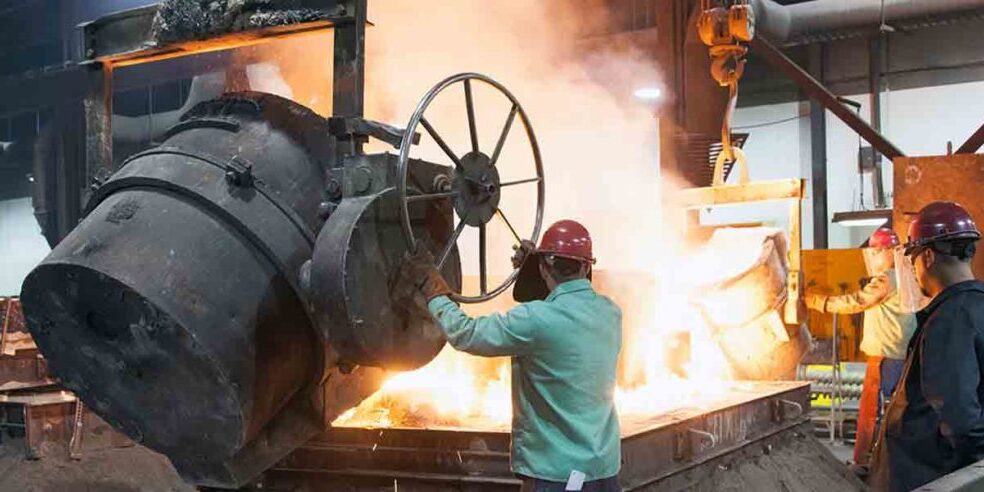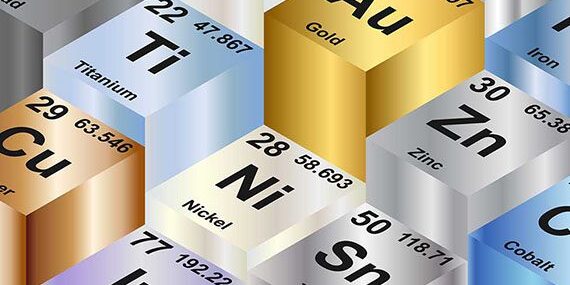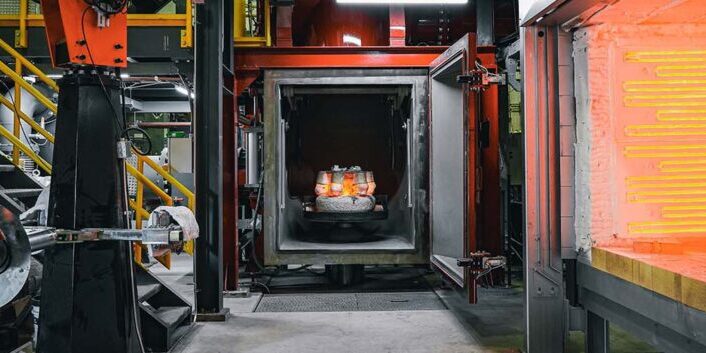Blog Bearium Metal Alloys: An in-depth guide of proprietary leaded bronzes
What Is Bearium Metal?
Bearium Metal is a group of high lead tin bronze alloys containing virgin copper, tin, and specially processed lead. These bearing bronzes provide every desirable feature found in other bearing metals, plus certain superior characteristics which are proprietary to MetalTek International. There are four grades available: B-4, B-8, B-10, B-11.
Benefits Of Bearium Alloys
The Bearium group of alloys offer a range of benefits in applications including bearings, bushings, thrust washers and other services that involve rubbing friction. Here are a few highlights of Bearium Alloys:
- Excellent protection in poor lubrication environments
- Extended life of components
- Low coefficient of friction
- High compressive strength
- Resistant to shock loads
- Sound and uniform grain structure
- High cutting speeds
What Makes Bearium Alloys So Great?
In Bearium bronze alloys, lead particles are in microscopic globular form, uniformly distributed through the alloy. There is no lead between copper and tin grain boundaries. Absolutely no oxides, fluxes, or other “agents” are used to accomplish this. As a result, there are no “hard spots” to score the shaft or interfere with machining. The below photomicrographs at the same magnification show the differences between Bearium Alloys (left/top) and other leaded bronzes (right/bottom).
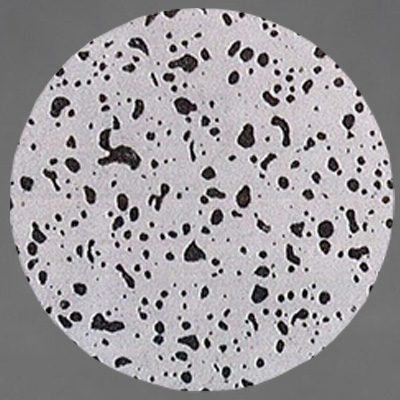
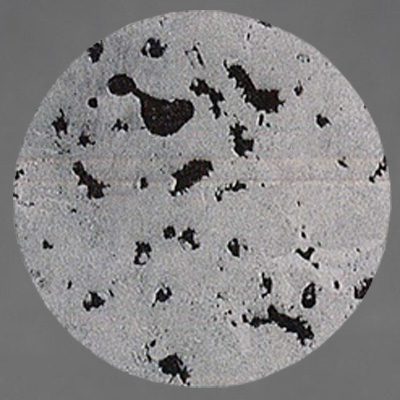
Has Bearium Been Independently Tested?
In an independent test conducted by the U.S. Government, a lubricated Bearium bearing was given a load of 1,000 psi at a speed of 1,000 rpm. The lubrication was removed and, with the same load and speed, the temperature rose to 1,320ºF. The bearing turned red. Then, cold water was turned on the shaft and bearing in an attempt to freeze them together. The post-test examination showed both parts in satisfactory condition and good for further service. The government report concluded “This metal will not, even under extreme conditions, melt like a Babbitt, or freeze on the shaft like a bronze.”
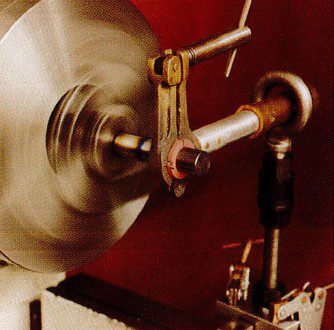
What Forms Are Bearium Metals Available In?
MetalTek’s Bearium Metals are available in various chemistries reflecting the amount of Bearium lead contained and the properties required. Bearium can be provided in cast form—centrifugal, continuous, or static. It is available in a variety of sizes and configurations of bar stock, including solid and cored bars starting from 1/2” O.D. all the way up to 180” (centrifugally casted).
Typical Applications Of Bearium Alloys
- Bearings
- Bushings
- Cryogenic components
- Pump & valve components
- Shaft sleeves
- Turbine thrust washers
- Wear rings
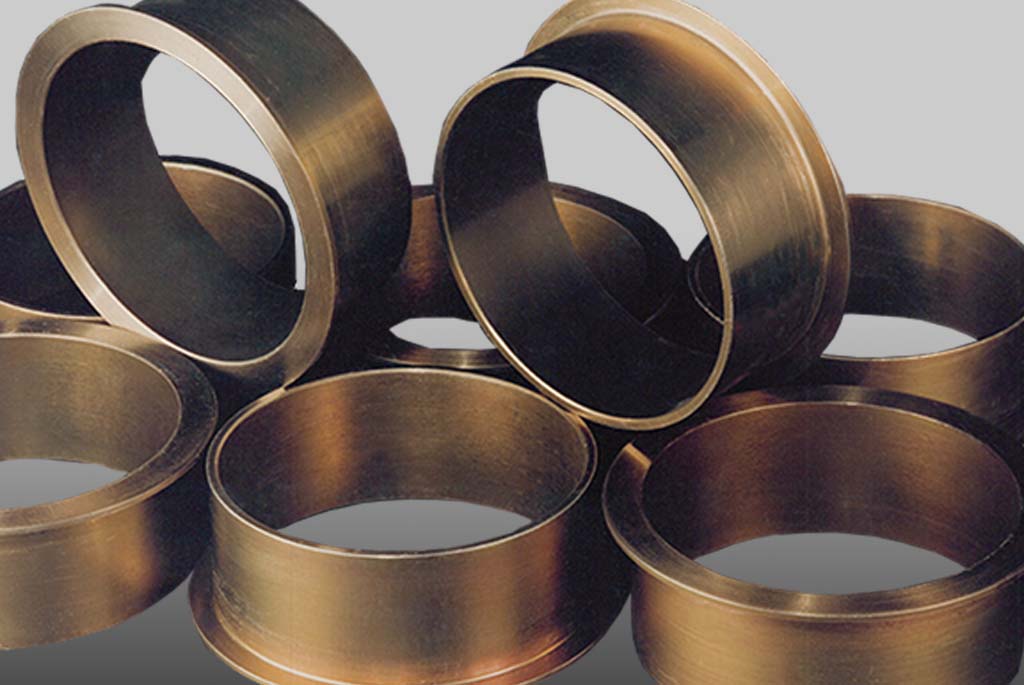
Which Grade Of Bearium Is Right For Me?
As mentioned above, Bearium is available in four grades. The following provides basic information of each grade and compares them side-by-side.
- Bearium® B-4 is used when the shaft or other mating part is relatively soft, is not heat-treated or carburized, and has a hardness below Rockwell C20.
- Bearium® B-8 is recommended for use where the mating shaft or component has a hardness greater than Rockwell C20 or where the mating part has been heat-treated or carburized.
- Bearium® B-10 metal is recommended where the mating shaft or component has a hardness greater than Rockwell C20 or where the mating part is heat-treated or carburized. It should be used in preference to the B-8 grade in applications that require somewhat higher physical properties than are available in B-8 material.
- Bearium® B-11 has the highest strength within the Bearium® family. It has the lowest content of lead and offers the highest tensile and yield strength.
Nominal Chemistry Of Bearium
| Element | Bearium B-4 | Bearium B-8 | Bearium B-10 | Bearium B-11 |
| Sn | 3.0% – 6.0% | 6.5% – 9.5% | 8.5% – 11.5% | 8.5% – 11.5% |
| Pb, Bearium Processed | 23.0% – 29.0% | 19.5% – 24.5% | 17.5% – 22.5% | 16.0% – 19.0% |
| Ni | — | — | — | 0.5% – 2.0% |
| Cu | Balance | Balance | Balance | Balance |
Typical Mechanical Properties Of Bearium
| B-4 | B-8 | B-10 | B-11 | |
| Yield Strength #/sq in. (0.2% Perm Set) | 11,000 | 14,000 | 14,750 | 16,000 |
| Tensile Strength #/sq in. | 21,500 | 24,000 | 25,500 | 30,000 |
| Elongation % in 2” | 16 | 12 | 10 | 8 |
| Brinell Hardness 10mm ball, 500 Kg load, 30 seconds | 40 | 50 | 55 | 60 |
| Compression Deformation Limit #/sq in. | 9,750 | 11,000 | 11,800 | 14,100 |
| Charpy Impact Ft-lbs | 2.2 to 2.6 | 2.2 to 2.6 | 2.2 to 2.6 | 2.2 to 2.6 |
| Modulus of Elasticity #/sq in. | 10,000,000 12,000,000 | 10,000,000 12,000,000 | 10,000,000 12,000,000 | 10,000,000 12,000,000 |
| Modulus of Rigidity #/sq in. | 3,000,000 | 3,300,000 | 3,700,000 | 4,000,000 |
| Electrical Conductivity % Copper at Room Temperature | 14.8 | 10.4 | 9.1 | 8.7 |
| Coefficient of Friction, Dry Determined on Amsler Wear Machine | .13 | .14 | .16 | .18 |
| Thermal Conductivity, @ Room Temp CGS Units: Cal/sq cm/cm/sec/deg C British Units: BTU/sq ft/hr/deg F | .138 33.4 | .097 23.4 | .085 20.4 | .080 18.5 |
| Specific Gravity | 9.4 | 9.3 | 9.2 | 9.1 |
| Weight per cubic inch, in lbs | .334 | .324 | .320 | .312 |
| Coefficient of Expansion Per in/deg F | .0000103” | .0000103” | .000011” | .000011” |
| Coefficient of Contraction, per in/deg 70ºF to –115ºF 70ºF to –330ºF | .0000103” .0000081” | .0000103” .0000081” | .000011” .0000087” | .000011” .0000087” |
The chemical composition alone does not entirely explain the superior frictional properties found in Bearium Metal. The elevated performance is also due in great measure to the processing the ingredients used. This results in a metallurgical structure that is superior to that found in other bearing materials even though they may have identical chemical compositions.
For guidance in selecting the appropriate Bearium alloy in your application, contact us.

